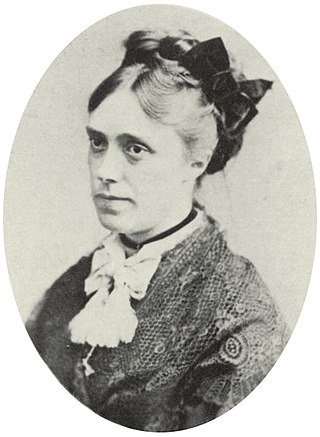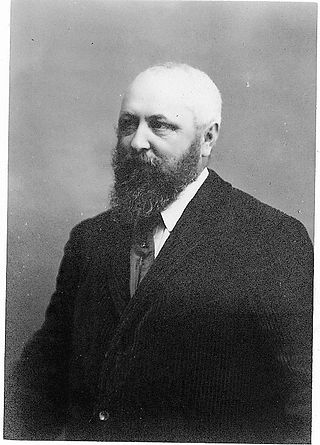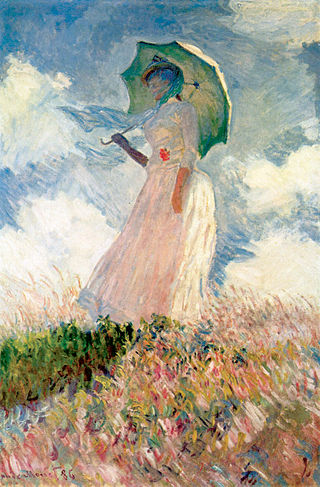
Oscar-Claude Monet was a French painter and founder of impressionist painting who is seen as a key precursor to modernism, especially in his attempts to paint nature as he perceived it. During his long career, he was the most consistent and prolific practitioner of impressionism's philosophy of expressing one's perceptions before nature, especially as applied to plein air (outdoor) landscape painting. The term "Impressionism" is derived from the title of his painting Impression, soleil levant, exhibited in 1874 initiated by Monet and his associates as an alternative to the Salon.

En plein air, or plein-air painting, is the act of painting outdoors.

Camille-Léonie Doncieux was the first wife of French painter Claude Monet, with whom she had two sons. She was the subject of a number of paintings by Monet, as well as Pierre-Auguste Renoir and Édouard Manet.

Haystacks is the common English title for a series of impressionist paintings by Claude Monet. The principal subject of each painting in the series is stacks of harvested wheat. The title refers primarily to a twenty-five canvas series which Monet began near the end of the summer of 1890 and continued through the following spring, though Monet also produced five earlier paintings using this same stack subject. A precursor to the series is the 1884 Haystack Near Giverny.
The Impressionists is a 2006 three-part factual docudrama from the BBC, which reconstructs the origins of the Impressionist art movement. Based on archive letters, records and interviews from the time, the series records the lives of the artists who were to transform the art world.

(Jean Louis) Ernest Hoschedé was a French department store magnate in Paris. Also during the successful period of his life, he was an art collector and critic. He lost his Impressionist art collection when he went bankrupt in 1877–1878. He moved his family into the home of Claude Monet in Vétheuil. He then lived in Paris and worked at Le Voltaire and then Magazine Français Illustré. His family continued to live with the Monets before and after his death. The year after his death, his wife Alice Hoschedé married Claude Monet, and was believed to have been Monet's mistress for years.

Alice Raingo Hoschedé Monet was the wife of department store magnate and art collector Ernest Hoschedé and later of the Impressionist painter Claude Monet.

The Regatta at Sainte-Adresse is an oil-on-canvas painting by the impressionist painter Claude Monet. It was painted in 1867 and is owned by the Metropolitan Museum of Art.

Theodore Earl Butler (1861–1936) was an American impressionist painter. He was born in Columbus, Ohio, and moved to Paris to study art. He befriended Claude Monet in Giverny, and married his stepdaughter, Suzanne Hoschedé. After her death he married her sister, Marthe Hoschedé. Butler was a founding member of the Society of Independent Artists.

Blanche Hoschedé Monet was a French painter who was both the stepdaughter and the daughter-in-law of Claude Monet.

Suzanne Hoschedé was one of the daughters of Alice Hoschedé and Ernest Hoschedé, the stepdaughter and favorite model of French impressionist painter Claude Monet, and wife of American impressionist painter Theodore Earl Butler. Suzanne is known as The Woman with a Parasol in Monet's painting of 1886.

Beach in Pourville is a painting by French artist Claude Monet. It is one of an 1882 series of oil-on-canvas works by Monet in the small seaside resort of Pourville-sur-Mer, near Dieppe in northern France. Monet is considered one of the most important members of the group of painters identified as the Impressionists. The painting was bought by the National Museum, Poznań, Poland in 1906 and exhibited in the display of their collection.

Boating on the River Epte is an 1890 oil painting by French impressionist artist Claude Monet. It is currently housed at the São Paulo Museum of Art.

The Fondation Claude Monet is a nonprofit organisation that runs and preserves the house and gardens of Claude Monet in Giverny, France, where Monet lived and painted for 43 years. Monet was inspired by his gardens, and spent years transforming them, planting thousands of flowers. He believed that it was important to surround himself with nature and paint outdoors. He created many paintings of his house and gardens, especially of water lilies in the pond, the Japanese bridge, and a weeping willow tree.

Michel Monet was the second son of Claude Monet and Camille Doncieux Monet.

Portrait of Père Paul, also known as Monsieur Paul or The Chef, is a painting by Claude Monet.

Arrival of the Normandy Train, Gare Saint-Lazare, also known as The Railway Station of Saint Lazare in Paris, is a c. 1877 painting by Claude Monet. It is in the permanent collection of the Art Institute of Chicago.

Victor Chocquet was a French art collector and an ardent propagandist of Impressionism. As a senior editor at the Directorate-General of Customs and Indirect Taxes, he was present at all the exhibitions where he defended painters confronted with mockery and insults. His collection was huge. It was dispersed after his death in 1899. Many of the paintings are currently in American museums.

Gare Saint-Lazare is a series of oil paintings by the French artist Claude Monet. The paintings depict the smoky interior of this railway station in varied atmospheric conditions and from various points of view. The series contains twelve paintings, all created in 1877 in Paris. This was Monet's first series of paintings concentrating on a single theme.


















